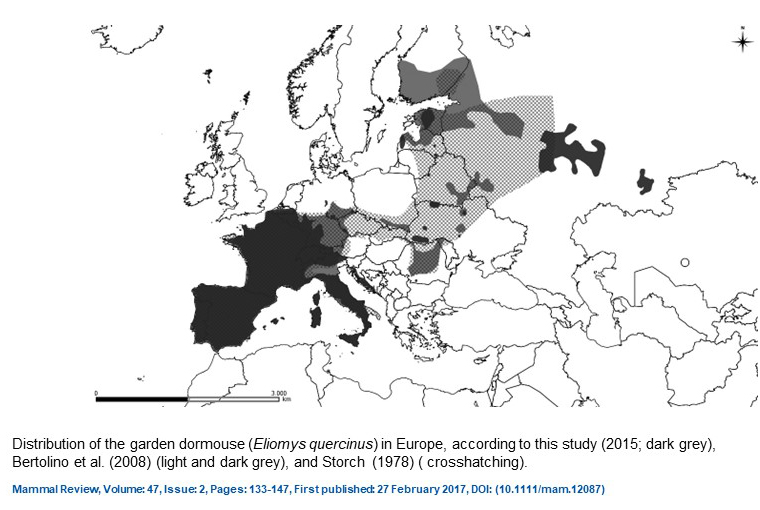The garden dormouse is losing terrain in Europe. Since 1978 it disappeared from half of its range. Mammal Conservation Europe started a Europe-wide initiative to stop the decline.
The garden dormouse is one of five dormice species native to Europe and was previously widespread across much of the continent. While it retains strongholds in south-western Europe, it appears to have been lost from more than half of the range it occupied in 1978. It is now extinct in Lithuania, Finland and Slovakia, probably extinct in Belarus, and has only single populations in the Netherlands, Poland and Slovenia. It is rare and localised in Austria, Ukraine, Romania and Croatia and is declining in Germany, Flanders (Belgium), Czech Republic, Latvia and Estonia. It is likely that the new IUCN Red List for European Mammals will raise the status of the species to Threatened. Yet in most countries there is no systematic monitoring, and the causes of the decline are unclear.

The contraction of a species over such a wide geographical area requires coordinated research and action across Europe. That’s why Mammal Conservation Europe started this initiative.
Actions to implement are:
- Raise awareness of the plight of the garden dormouse, and provide information on steps that can be taken by the public and land-managers to help the species;
- Develop standardised monitoring techniques that can then be deployed across the species’ range and former range, to gather up-to date information on its distribution and population size;
- Develop a Species Recovery Plan;
- Develop pilot-scale intervention projects that will inform a European-scale Recovery Project.
How you can help:
- If you see a garden dormouse, please let us know. You can report sightings using the iNaturalist app (available for android or apple phones), the iNaturalist Garden Dormouse Initiative page, or through recording schemes operating in your country;
- Retain old orchards, hedgerows and natural vegetation that provides shelter and food for dormice;
- Avoid pesticides and poisons in your garden. Work in Germany suggests that rat and mouse poisons may be harming many garden dormice;
- Cover water barrels in your garden to avoid accidental drowning;
- Tell people about the plight of the garden dormouse and what they can do to help;
- Donate to help our project:






